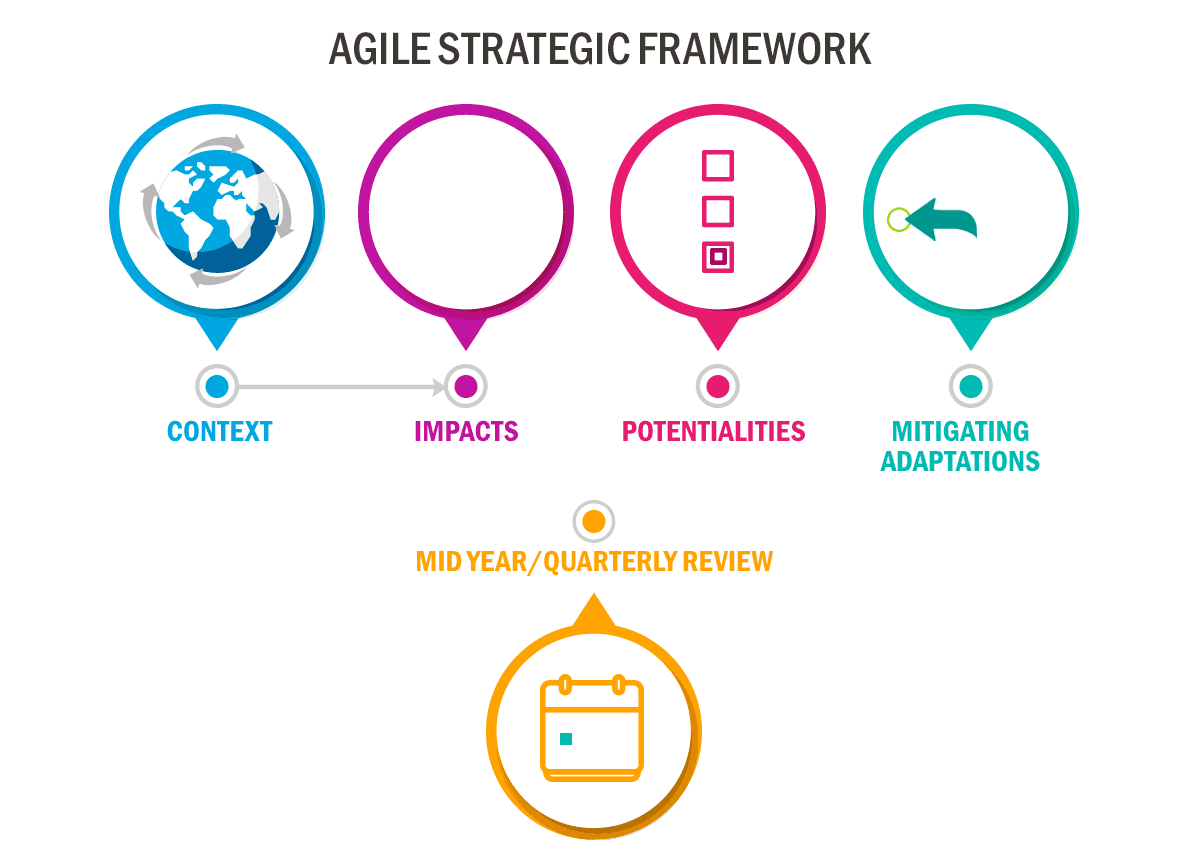How to make your strategy agile in an era of constant change
Technology and rapidly changing consumer behaviors are causing disruption all around us, regardless of industry—and this disruption is particularly fierce in media and entertainment.
Platform and competitive proliferation. Cord cutting. Binge watching. Live streaming. Measurement and accountability. Exploding content budgets and talent expenditures. Seemingly unsustainable churn. 5G. Marketing automation. Artificial intelligence.
It seems there is no amount of coffee (or wine, yoga, meditation, [insert other coping mechanism here]) in the world that can help executives cope with the deluge of challenges today. Not to mention the ones ahead. According to a recent Harvard Business Review article which cited a 2016 HBR Analytics survey of 385 managers, “most executives were frustrated with planning because they believed that speed was important and that plans frequently changed anyway.”
Not only can strategic planning seem frustrating—it seems pointless to sit down and craft a plan that could be upended in the months or even mere weeks ahead—constantly changing plans also present challenges in motivating and focusing your teams.
In this digital age, agile development and decision-making is essential, but without a strategic framework, an agile team may just get to the wrong place faster.
Enter the Agile Strategy Template: a framework for adapting on the fly
An Agile Strategy Template (AST) creates a near-term adaptable framework for you and your team to plan within which also allows for a range of changing circumstances. The foundation of AST is consumer insights, technological forecasts, short-range scenario planning, and qualitative moderation techniques that bring out the most impactful and diverse perspectives across the team.
Context – it begins with leadership being exposed to the current state of industry facts and trending data, and the world of consumer perceptions and behavioral trends. The purpose is to distill significant human-centered insights and industry information into the minds of decision-makers.
Impacts – this facilitated discussion identifies the disruptive factors that could impact the next 18-month horizon—including impacts such as industry consolidation, an economic downturn, privacy breaches, and technological advances.
Potentialities – this critical phase of the process prioritizes the items that could have the most impact on business operations and the baseline strategy. These priorities are then framed into levels of severity and likelihood, and used as the basis to frame up potential future scenarios.
Mitigating Adaptations – the framework of strategic adaptation comes into view when the team discusses specifically how plans would change in these alternate scenarios. By talking through scenarios that may at the moment seem unlikely, indicators and warning signs will be anticipated and are more likely to be identified, and therefore plans more easily adapted to mitigate negative impacts.
Temperature Checks – taking the time to revisit the framework with your team regularly throughout the year will enable you to check on assumptions, identify any tell-tale signs of change, be agile in modifying your strategy if needed, and stay focused.
The biggest challenge is creating an Agile Strategy Template the first time. Once you have the framework established it is easier to update and iterate. The benefits are many, and here are a few:
- Keep agile teams on course
- Adapt to market changes quickly
- No-surprise “surprises”
- Team alignment and productivity
- Energize and motivate through command of knowledge
- Keep momentum through the year
- Competitive advantage
If you’re not investing time in understanding your near-term potential futures, how can you ensure your team is able to deploy strategies that leverage opportunities or meet challenges head on in this rapidly changing environment?
As leaders in consumer and industry trends with a 60-year-history of combining insights from both for high-level impact, we have always put human understanding at the center of it all. Humans are complex. Isn’t managing for that complexity really what being agile is all about?


